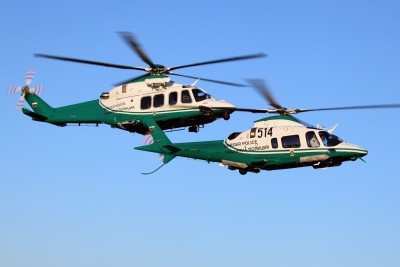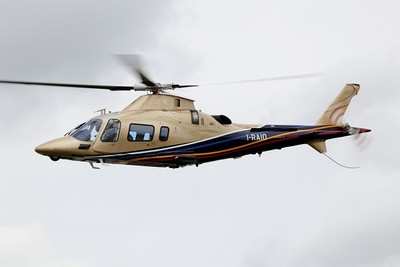AD 2021-16-13 Requires Repetitive Inspections Of The Vertical Fin Vibration Absorber Installation
The FAA is adopting a new airworthiness directive (AD) for Leonardo S.p.a. (Leonardo) Model A109S and AW109SP helicopters with a certain part-numbered vertical fin vibration absorber installation installed.

This AD requires repetitive inspections of the vertical fin vibration absorber installation and the surrounding structure and depending on the inspection results, removing certain parts from service. This AD also prohibits installing certain part-numbered vertical fin vibration absorber installations on any helicopter. This AD was prompted by a report of cracks and damage detected on the vertical fin absorber installation and surrounding structure during scheduled inspections. The FAA is issuing this AD to address the unsafe condition on these products. This AD is effective September 22, 2021.
Supplementary Information: The FAA issued a notice of proposed rulemaking (NPRM) to amend 14 CFR part 39 by adding an AD that would apply to Leonardo Model A109S and AW109SP helicopters with a vertical fin vibration absorber installation part number (P/N) 109-B810-79-101 installed.
The NPRM published in the Federal Register on May 13, 2021 (86 FR 26198). In the NPRM, the FAA proposed, within 30 hours time-in-service (TIS), and thereafter at intervals not to exceed 100 hours TIS, removing the vertical fin vibration absorber installation and, using a mirror and light source, inspecting the rib assembly and depending on the inspection results, removing certain parts from service. The NPRM also proposed to require inspecting the vertical fin vibration absorber installation for hole elongation; for fretting between the plate and the masses, and in between the masses; for fretting on the doubler; and the bolts for scratches and corrosion. Depending on the inspection results, the NPRM proposed removing the vertical fin vibration absorber installation from service. The NPRM also proposed to require, within 12 months TIS, removing the vertical fin vibration absorber installation from service.
Finally, the NPRM proposed to prohibit installing an affected part on any helicopter, and provided a terminating action for the 100-hour TIS repetitive inspections.

The NPRM was prompted by EASA AD 2014-0150, dated June 18, 2014 (EASA AD 2014-0150), issued by EASA, which is the Technical Agent for the Member States of the European Union, to correct an unsafe condition for certain AgustaWestland S.p.A. (now Leonardo S.p.a. Helicopters) (formerly Agusta S.p.A.) Model A109S and AW109SP helicopters with an absorber P/N 109-B810-79-101installed. EASA advises that during a scheduled inspection on Model A109S and AW109SP helicopters, cracks and damage were detected on the vertical fin vibration absorber installation and the surrounding structure. EASA stated that investigation results determined the cracks and damage were likely related to the design of the vertical fin vibration absorber installation and incorrect installation. Accordingly, EASA AD 2014-0150 required repetitive inspections and removal of the affected part.
After EASA AD 2014-0150 was issued, EASA determined certain helicopters were not included in the applicability and may also be subject to the unsafe condition. Accordingly, EASA issued EASA AD 2019-0294, dated December 4, 2019 (EASA AD 2019-0294), which supersedes EASA AD 2014-0150. EASA AD 2019-0294 retains the requirements of EASA AD 2014-0150 and expands the applicability, prohibits vertical fin vibration absorber installation P/N 109-B810-79-101 from being installed on any helicopter, and considers removal of the affected part to constitute terminating action for the repetitive inspections. EASA states that the unsafe condition, if not detected and corrected, could affect the structural integrity of the helicopter.
 ANN's Daily Aero-Term (04.28.24): Airport Marking Aids
ANN's Daily Aero-Term (04.28.24): Airport Marking Aids Aero-News: Quote of the Day (04.28.24)
Aero-News: Quote of the Day (04.28.24) ANN's Daily Aero-Linx (04.28.24)
ANN's Daily Aero-Linx (04.28.24) Aero-News: Quote of the Day (04.29.24)
Aero-News: Quote of the Day (04.29.24) ANN's Daily Aero-Linx (04.29.24)
ANN's Daily Aero-Linx (04.29.24)




